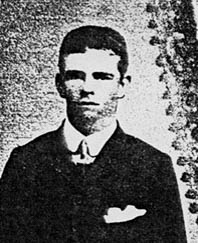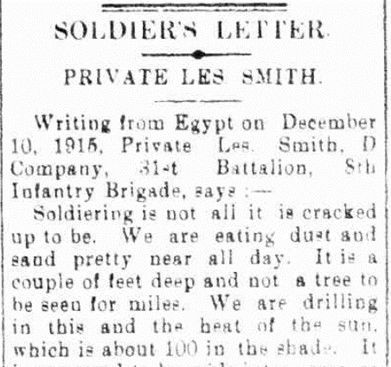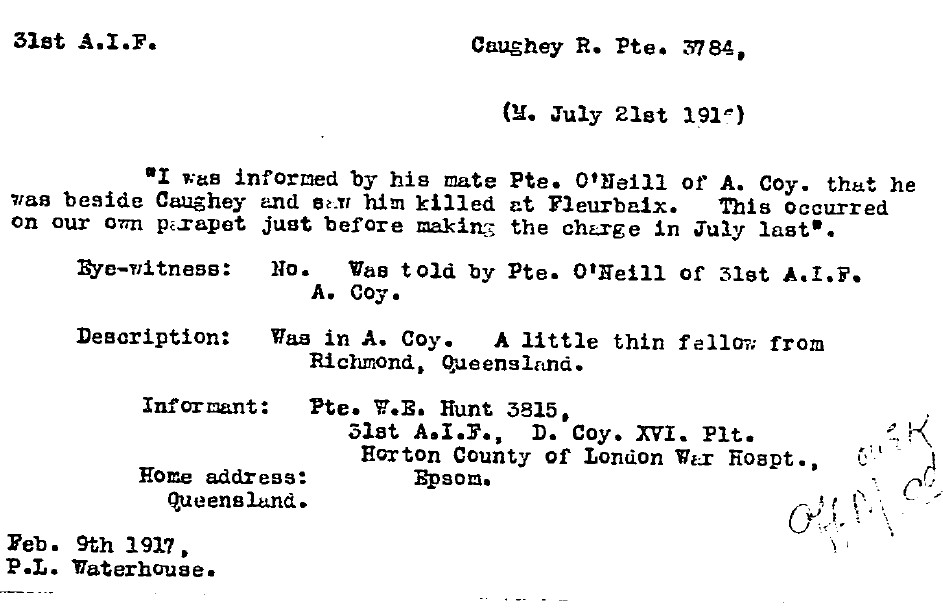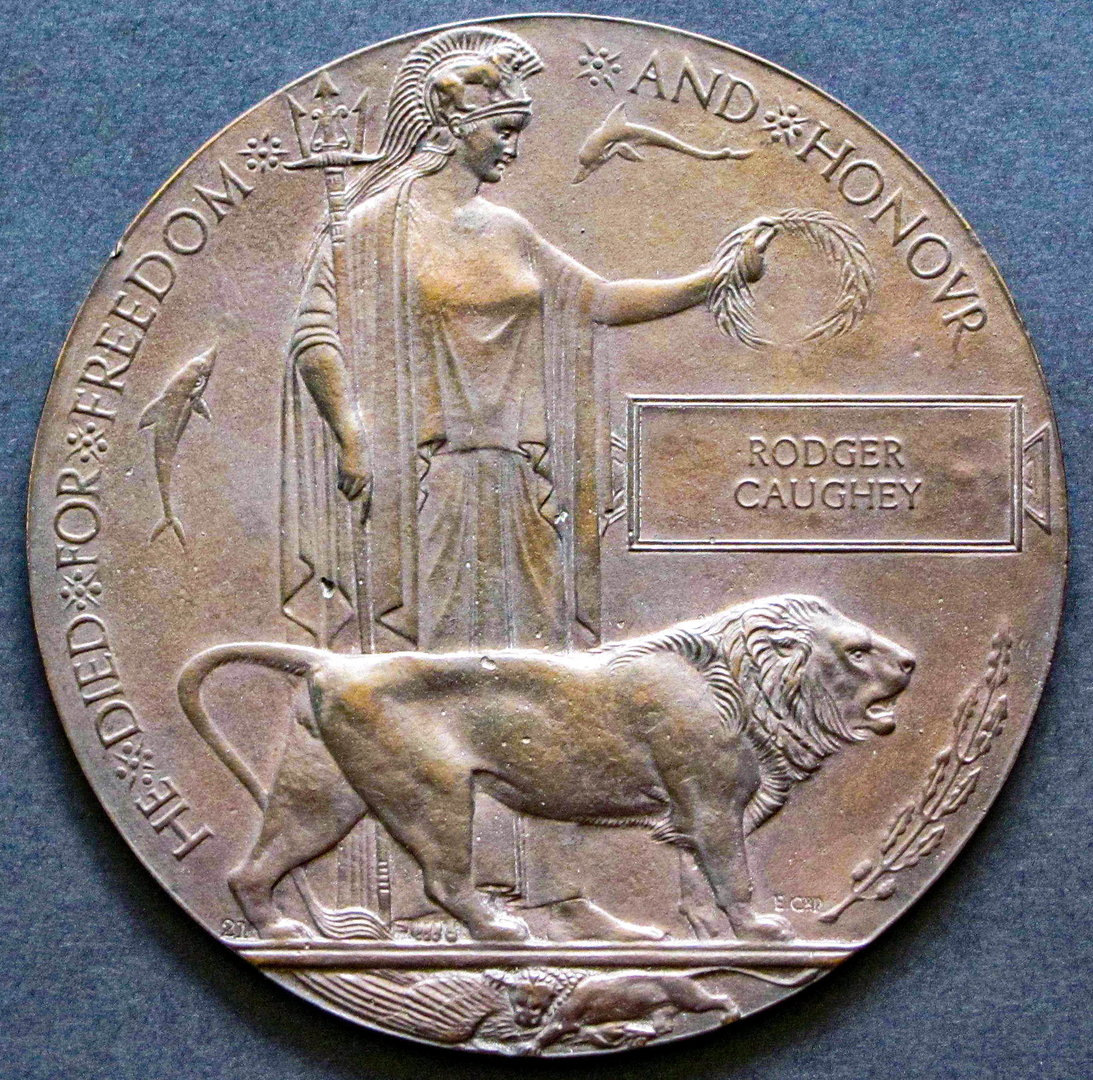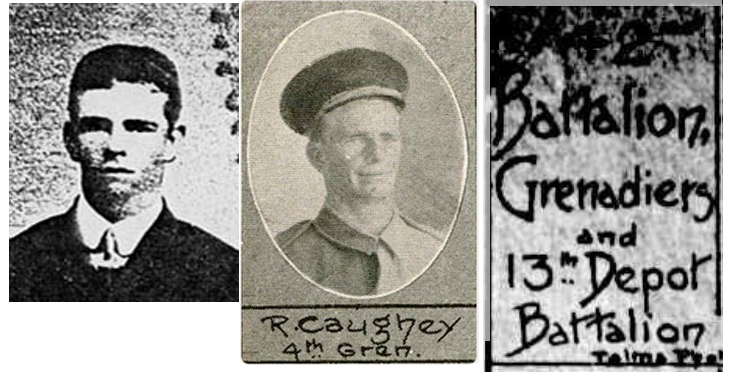Rodger CAUGHEY
Eyes grey, Hair dark brown, Complexion dark
Rodger Caughey – Queensland Outback
Can you help us identify Rodger?
Rodger was killed in Action at Fromelles. As part of the 31st Battalion he was positioned near where the Germans collected soldiers who were later buried at Pheasant Wood. There is a chance he might be identified, but we need help. We are still searching for suitable family DNA donors.
In 2008 a mass grave was found at Fromelles, a grave the Germans dug for 250 (Australian) bodies they recovered after the battle.
If you know anything of contacts here in Australia or his relatives from Scotland, please contact the Fromelles Association.
See the DNA box at the end of the story for what we do know about his family.
We thank Michael and Donna Fiechnter for their contribution to the story.
From ‘Outback’ Scotland to ‘Outback’ Queensland
Rodger’s parents Robert Caughey and Annie (nee Cameron) were married on 2 January 1882 in Stoneykirk, Wigtownshire, Scotland - far west Scotland, it is closer to Belfast, Ireland than it is to Glasgow. Their first three children, Jane, Sarah and Elizabeth were born in Scotland.
In 1890 they migrated to Queensland, arriving via ship Taroba. They settled in the pioneering area of Hughenden Queensland. Hughenden is in north-central Queensland, 400 km west of Townsville. The first railroad had only arrived in 1887. Rodger and his twin Sister Bridget were born on 1 May 1891, but Bridget did not survive. Robert was a ‘carter’ and, as the land was almost all given over to sheep and cattle, it is likely that he carted wool one way and provisions in the other direction between the remote towns.
Life was difficult for the family. Rodger’s mother Annie died of malaria/dysentery when Rodger was about 18 months old. His older sisters Jane and Lizzie, just 9 and 7, must have been a great help with the toddler, but misfortune continued with Jane dying five years later. It is likely that Rodger had begun working with his father from an early age. When he enlisted, Rodger listed his occupation as a teamster - working with horses and bullocks.
Elizabeth and Sarah had married in 1907 and 1908. Robert died in 1911 when Rodger was 20 and by 1921 Elizabeth had migrated to New Zealand.
Off to War
Rodger felt the ‘call to war’ and enlisted on 10 September 1915 in Brisbane. He was assigned to the 26th Battalion, 9th Reinforcements. The main 26th were fighting in Gallipoli at the time. Rodger had an older first cousin, John Cameron Mackenzie, who also served with the 26th Battalion, although it is unlikely the two ever crossed paths as he lived over 1000 km from Rodger. John left Australia about the time Rodger enlisted and was transferred from the 26th Battalion to the 12th Battalion at the time Rodger arrived in Egypt.
John was killed by a shell on 1 May 1918 as part of the allied counter-offensive. He is buried at Le Peuplier Military Cemetery, Caestre, France. Rodger left Australia on 31 January 1916 aboard HMAT A62 Wandilla, arriving in Egypt at the end of February/early March. With the impact of the Gallipoli campaign and the thousands of newly recruited soldiers arriving in Egypt from Australia, reorganizations had been underway. As Rodger’s 26th Battalion had received orders to go the Western Front just as he arrived, he was transferred to the 31st Battalion, C Company, on 6 April 1916.
The 31st was made up of two companies from Queensland and two from Victoria. He joined them at the Duntroon Plateau Camp, 7 miles from the Suez Canal. At the end of April the battalion was moved to Ferry Post on the Suez canal and then to Moascar at the end of May. The months in the desert passed, but by the time the 31st Battalion was transferred to France, the men were all heartily sick of Egypt. Private Les Smith’s (934) letter home pretty well sums it up.
To the Western Front and Fromelles
The 31st Battalion began to make their way to the Western Front on 15 June, by train from Moascar to Alexandria. Rodger’s C Company then sailed to Marseilles on the troopship Manitou. After disembarking on 23 June, they boarded trains to Steenbeque and marched to the camp at Morbecque, 35 km from Fleurbaix, arriving on 26 June. The battalion strength was 1019 soldiers. Training continued, now with how to handle poisonous gas included in their regimen. They began their move towards Fleurbaix on 8 July and by 11 July Rodger was into the trenches for the first time.
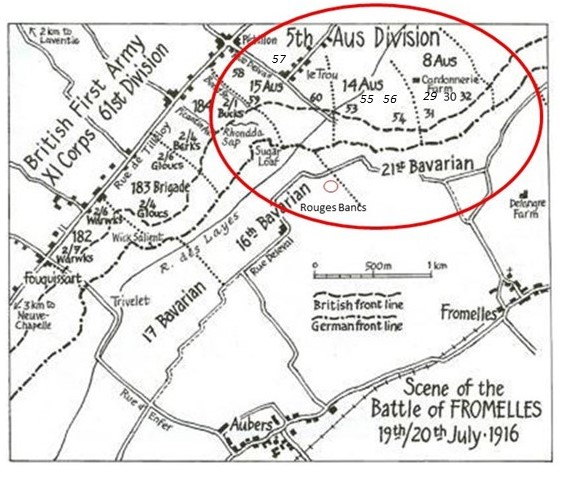
The original attack was planned for the 17th, but bad weather caused it to be postponed. On the 19th they were back into the trenches and in position at 4.00 PM. "Just prior to launching the attack, the enemy bombardment was hellish, and it seemed as if they knew accurately the time set"
Source: AWM4 23/48/12, 31st Battalion War Diaries, July 1916, page 23
There were machine guns emplacements to their left and directly ahead at Delrangre Farm and there was heavy artillery fire in No-Man’s-Land. The assault began at 5.58 PM and they went forward in four waves, Rodger’s C Company and A Company were in the first two waves and B and D Company in the 3rd and 4th. Rodger’s role in the battle was brief…according to Red Cross witness statements, he was killed in the initial charge.
”I saw him fall, apparently killed outright.”
“This occurred on our own parapet…”
“Saw Caughey killed during an advance…saw him laying in the same place and posture when we came back.”
Source: Australian Red Cross Wounded and Missing Files – Rodger Caughey, p 2, p 5, p 4
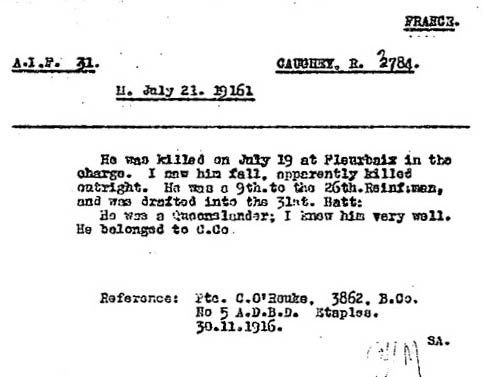

The battle raged on. The pre-battle bombardment did have a big impact and by 6.30 PM the Aussies were in control of the German’s 1st line system, which was described as:
“practically a ditch with from 1 to 2 feet of mud and slush at the bottom”.
Unfortunately, with the success of their attack, ‘friendly’ artillery fire caused a large number of casualties. By 8.30 PM the Australians’ left flank had come under heavy bombardment with high explosives and shrapnel. Return bombardment support was provided and the 32nd, who also had the job of holding the flank to the left of the 31st, were told that ‘the trenches were to be held at all costs’.
Source AWM4 23/49/12, 32nd Battalion War Diaries, July 1916, page 12
Fighting continued through the night. At 4.00 AM the Germans began an attack from the Australian’s left flank. Given the Australian advances that had been made earlier, portions of their rear trench had been left almost empty, which then enabled the Germans to be in a position to surround the soldiers. At 5.30 AM the Germans attacked from both flanks in force and with bombing parties. Having only a few grenades left themselves, the only resistance the 31st could offer was with rifles:
‘The enemy swarmed in and the retirement across No Mans’ Land resembled a shambles, the enemy artillery and machine guns doing deadly damage.’
The 31st were out of the trenches by the end of the day on the 20th. From the 1019 soldiers who left Egypt, the initial impact was assessed as 77 soldiers were killed or died from wounds, 414 were wounded and 85 were missing. To get some perspective of the battle, when Charles Bean, Australia’s official war historian, attended the battlefield two and half years later, he observed a large amount of bones, torn uniforms and Australian kit still on the battlefield. The ultimate total was that 161 soldiers were either killed or died from wounds and of this total 82 were missing/unidentified. The bravery of the soldiers of the 31st was well recognised by their own Battalion commanders.
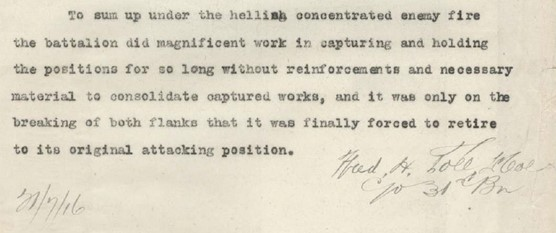
Two ‘Issues’ Remained After the Battle – Being Addressed 100+ Years Later
While the witness statements suggest Rodger was likely killed near the Australian lines, his body was not recovered and he was recorded as ‘Missing in Action’. This news was sent home and it also appeared in a number of Queensland newspapers. Obtaining confirming information about the Missing took a long time. Rodger’s death was not formally declared until a 1 August 1917 ‘Enquiry in the Field’…BUT this record incorrectly stated he died on 21 July 1916.
First Issue – Rodger’s name was not included on the VC Corner Memorial.
With his formal records stating he did not die on the 19th/20th, his name was not included with the names of the missing on the VC Corner Cemetery and Memorial, but was placed at the Australian National Memorial, Villers-Bretonneu, France instead. From research done about 100 years after the battle, it was found that 'C' Company appeared to be the only Company to furnish casualty records that have 21 July recorded as their date of death – for a total of forty soldiers. While it is uncertain as to why this was done, it likely reflects when the recording of the information was done, rather than the date of death. This was not corrected at the time.
This issue was finally dealt with by the Office of Australian War Graves, Commonwealth War Graves Commission and Rodger’s name is now on the Addendum Panel at the VC Corner Cemetery and Memorial, where it belongs.
Second Issue – Where is Rodger?
There is an undated, handwritten note in his AIF file that states Rodger was buried, but it gives a very general map reference which is several kilometers from the site of the battle.

There are similar notations for 21 C Company soldiers, indicating that at some time the Army had gained information on the burial of these men by the Germans. While this specific map reference is several kilometres from the site of the battle, the overall questions around these men’s fate eventually assisted in persuading the Army that some of these men could have been amongst the unidentified Australian soldiers whose remains were exhumed at Pheasant Wood near Fromelles. Four of the 21 C Company soldiers with this information in their file have been found to be in mass grave at Pheasant Wood.
77 of the 250 soldiers found in the grave remain unidentified. To date (2024), a total of 23 of the original 82 missing 31st Battalion soldiers have been identified from DNA testing of the soldiers from mass grave the Germans dug at Pheasant Wood that was discovered in 2008. They are now properly buried in the Pheasant Wood Cemetery.
If it is true that Rodger died near the Australian lines, there is only a slim hope that he could still be found at Pheasant Wood, but one worth pursuing. If you have any information about his family, please contact the Fromelles Association. Rodger was awarded the Victory Medal, the British War Medal, a Memorial Scroll and a Memorial Plaque.
He is commemorated at VC Corner, Villers-Bretonneu Memorial and the Caloundra Shire of Landsborough Roll of Honour.
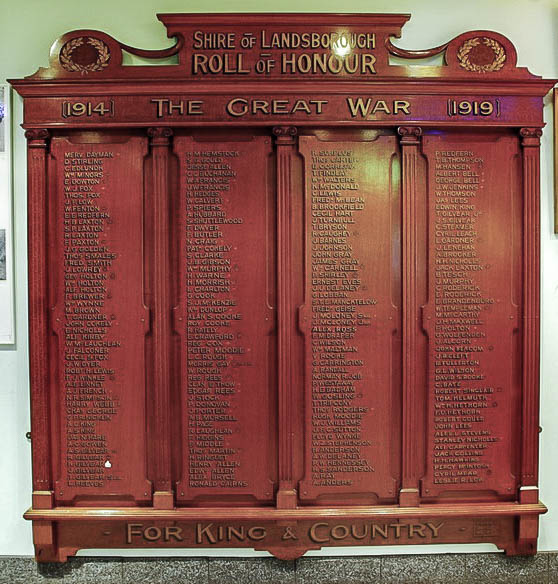
Editorial Addendum
There is a photo of Rodger that is in "circulation" in a number of sources, i.e. Google searches, Ancestry records, Virtual War Memorial Assn, etc., that we believe to be incorrectly associated with Rodger Caughey (3784). This photo is from an article in the 'Queenslander' newspaper dated 22 July 1916 - issued after he died. The article also associates his photo with soldiers from the 42nd Battalion, Grenadiers and 13th Depot Battalion and specifies R Caughey as 4th Gren. Rodger Caughey's (3784) Army records do not reflect this association. We were unable to find another R. Caughey in the National Archives Australia WW1 soldier records to align with the information in the news article, however. Finally, and less conclusively, the photo in the newspaper does not appear to visually align with the photo provided from Rodger Caughey's (3784) family.
Family connections to Rodger Caughey are sought, especially male family lines from Robert Caughey or his ancestors.
| Soldier | Rodger Caughey (1891-1916) |
| Parents | Robert Caughey (1851-1911) b Troon, Scotland, d Hughenden, QLD and Annie Cameron (1862-1893) b Stoneykirk, Scotland d Hughenden, QLD |
| Siblings | Jane (1883-1898) b Leswalt, Scotland, d Townsville QLD | ||
| Sarah Anne (1885-1971) b Stranraer, Scotland, d Brisbane QLD, m Edward Lowe | |||
| Elizabeth Cunningham (1888-1965) b Stranraer, Scotland, d Auckland NZ, m John Hodgkinson |
| Grandparents | |||
| Paternal | Charles Caughie (1824-1901) b Stoneykirk, Scotland, d Glasgow, Scotland and Isabella McFern (1827- ) b Ireland | ||
| Maternal | John Cameron (1823-1897) b Ireland d Stoneykirk, Scotland and Elizabeth McCulloch (1821-1898) b Portpatrick, Scotland, d Kirkcudbrightshire, Scotland |
The Fromelles Association would love to hear from you

Contacts
(Contact: carla@fromelles.info or geoffrey@fromelles.info).
(Contact: army.uwc@defence.gov.au or phone 1800 019 090).
Donations
If you are able, please contribute to the upkeep of this resource.
(Contact: bill@fromelles.info ).
